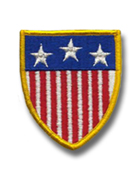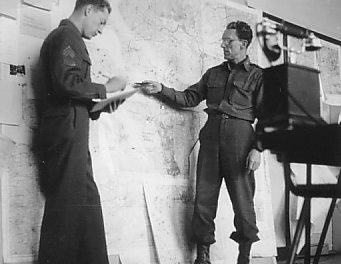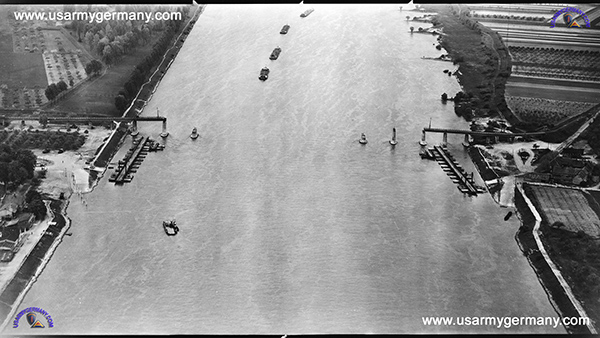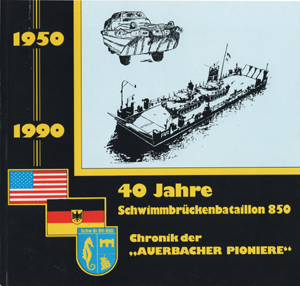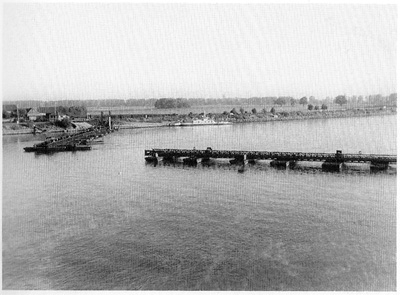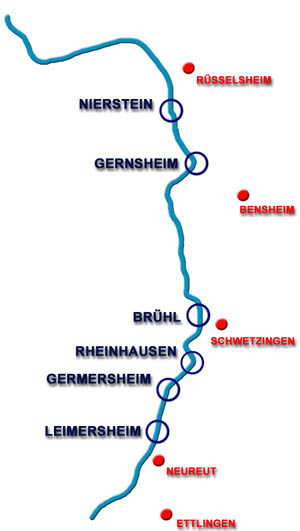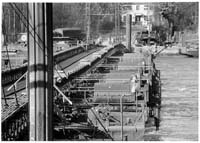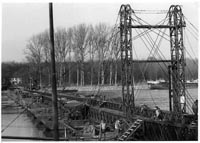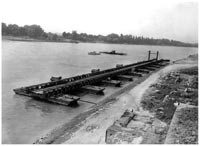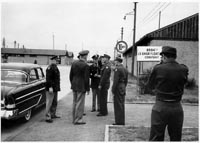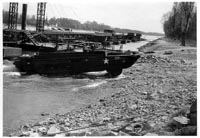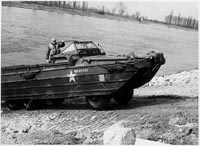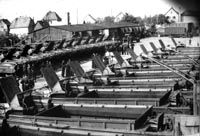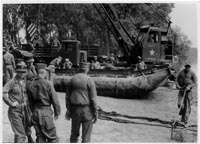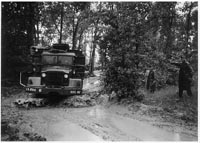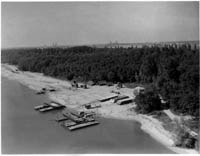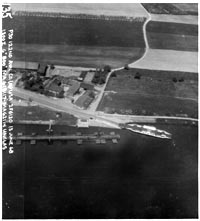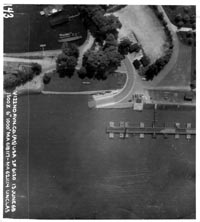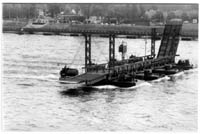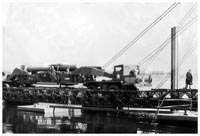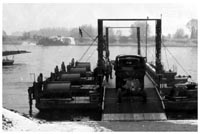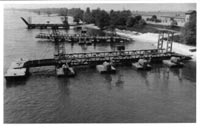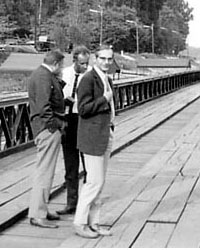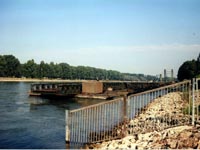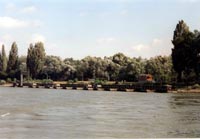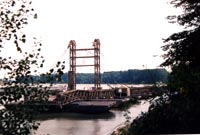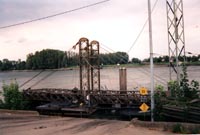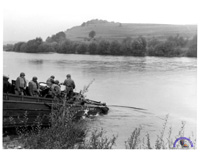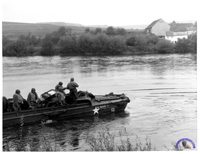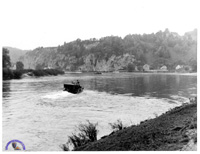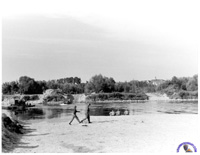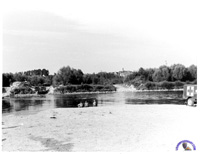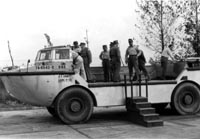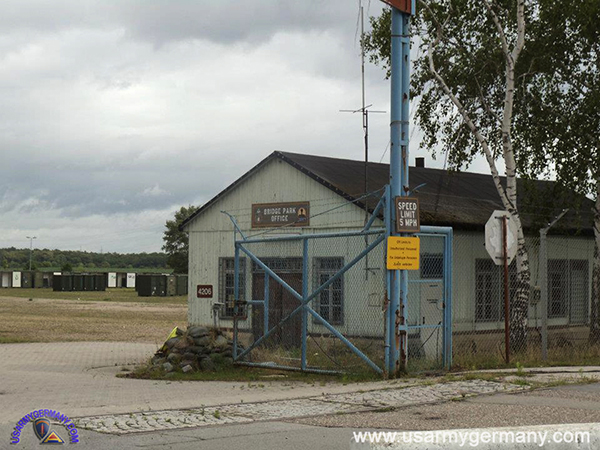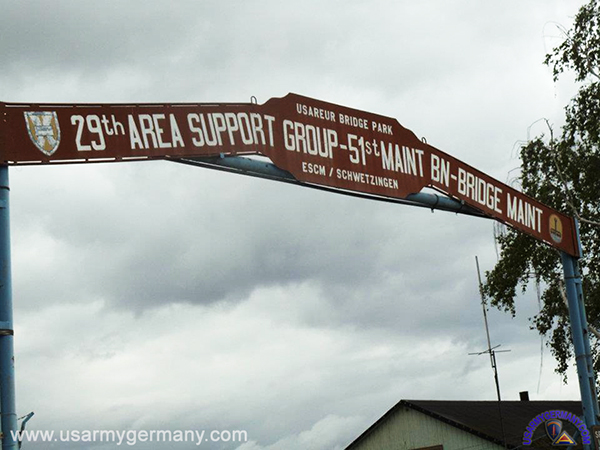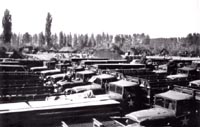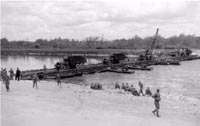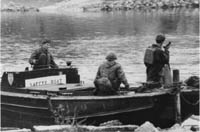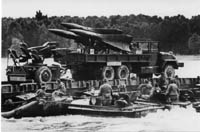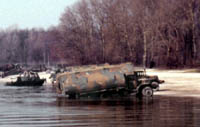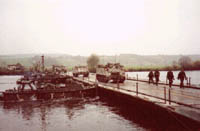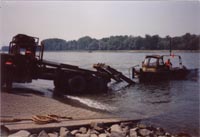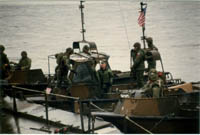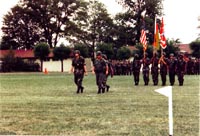| If you do
NOT see the Table of Contents frame to the left of this page, then
Click here to open 'USArmyGermany' frameset |
||||||||||||||||||||||||||||||||||||||||||||||||||||||
|
6960th
& 6961st Civilian Labor Groups |
||||||||||||||||||||||||||||||||||||||||||||||||||||||
|
|
||||||||||||||||||||||||||||||||||||||||||||||||||||||
|
||||||||||||||||||||||||||||||||||||||||||||||||||||||
|
|
||||||||||||||||||||||||||||||||||||||||||||||||||||||
| 7972nd LSC History | ||||||||||||||||||||||||||||||||||||||||||||||||||||||
| 1950 - 1959 | ||||||||||||||||||||||||||||||||||||||||||||||||||||||
| (Source: Email from Günter Oswald, 8594th LS Co; 8595th LS Pltn) | ||||||||||||||||||||||||||||||||||||||||||||||||||||||
|
||||||||||||||||||||||||||||||||||||||||||||||||||||||
|
||||||||||||||||||||||||||||||||||||||||||||||||||||||
| 1953 | ||||||||||||||||||||||||||||||||||||||||||||||||||||||
| (Source: US Military Flood Relief Operations in the Netherlands, USAREUR Historical Division, Karlsruhe, 1953) | ||||||||||||||||||||||||||||||||||||||||||||||||||||||
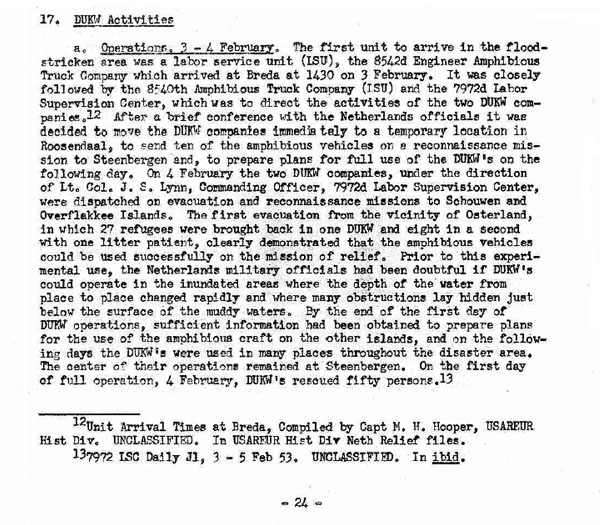 |
||||||||||||||||||||||||||||||||||||||||||||||||||||||
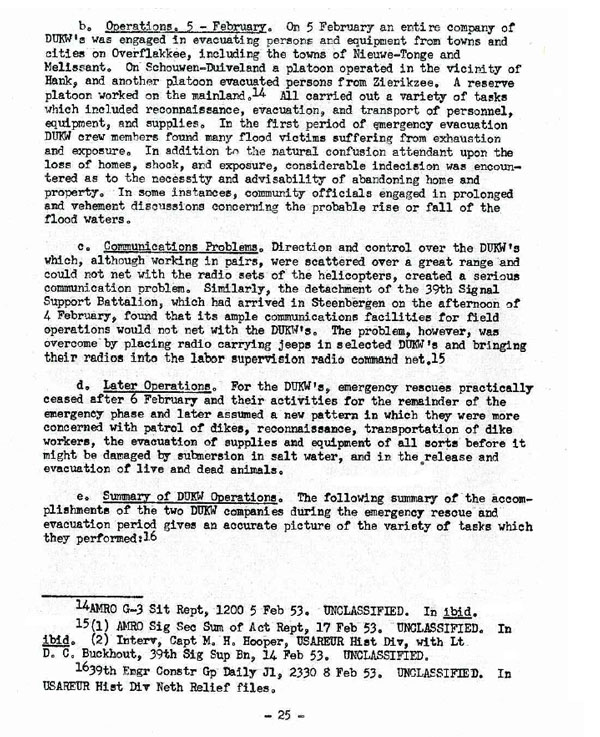 |
||||||||||||||||||||||||||||||||||||||||||||||||||||||
 |
||||||||||||||||||||||||||||||||||||||||||||||||||||||
| 6960th CLG History | ||||||||||||||||||||||||||||||||||||||||||||||||||||||
| 1950 - 1965 | ||||||||||||||||||||||||||||||||||||||||||||||||||||||
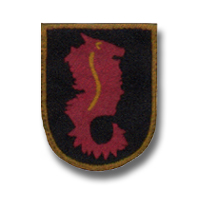 6960th CLG Patch
6960th CLG Patch |
||||||||||||||||||||||||||||||||||||||||||||||||||||||
| (Source: Email from Günter Oswald, 8594th LS Co; 8595th LS Pltn) | ||||||||||||||||||||||||||||||||||||||||||||||||||||||
6960th LS Battalion UNIT HISTORY
|
||||||||||||||||||||||||||||||||||||||||||||||||||||||
|
||||||||||||||||||||||||||||||||||||||||||||||||||||||
| (Source: 40 Jahre Schwimmbrückenbataillon 850 - Chronik der "Auerbacher Pioniere," by Alexander Klemm, 1990) | ||||||||||||||||||||||||||||||||||||||||||||||||||||||
|
||||||||||||||||||||||||||||||||||||||||||||||||||||||
| (Source: Official website of the German Bundeswehr - www.bundeswehr.de) | ||||||||||||||||||||||||||||||||||||||||||||||||||||||
| Schwere Pionierbataillon 715 Effective Jan 1 1965, the 6960th LS Battalion (Swing Bridge M&S) was transferred to the German Bundeswehr and reorganized and redesignated as the 715th Heavy Engineer Battalion (Schwere Pionierbataillon 715). The battalion remained stationed in Bensheim, Germany. At some point prior to 1981, the battalion was redesignated as the Schwere Schwimmbrückenbataillon 880 (880th Heavy Swing Bridge Battalion). The unit remained in Bensheim. In 1981, the battalion was moved to Pfungstadt, Germany. The battalion was reorganized and redesignated as the Schwimmbrückenbataillon 850 (850th Swing Bridge Battalion). Mission of the battalion was to support river-crossing operations on the Rhine River through the operation and security of swing bridges at fixed locations (Kornsand near Oppenheim, Leimersheim, Rheinhausen, Eich, Brühl and Germersheim) and military ferries. |
||||||||||||||||||||||||||||||||||||||||||||||||||||||
| (Source: Email from Günter Oswald, 8594th LS Co; 8595th LS Pltn) | ||||||||||||||||||||||||||||||||||||||||||||||||||||||
| I was member
of the 8594th Labor Service Float Bridge Co stationed in NEUREUT near
KARLSRUHE in GERMANY. Later I was in the 8595th LS Bridge Maintenance
Platoon. I was the Supply Sergeant in both units. Both units consisted
of 100% German civilians. The Neureut Kaserne was divided into two separate camps. One was occupied by the US Army and consisted of the standard German, two-story barracks buildings. The other camp, primarily one-floor buildings (see photo #4), was used by the Labor Service: 6980th LS Signal Construction Bn, 6981st LS Signal Construction Bn, 8594th LS Float Bridge Co and 8595th LS Bridge Maintenance Platoon. |
||||||||||||||||||||||||||||||||||||||||||||||||||||||
| ORGANIZATION (late 1950s): | ||||||||||||||||||||||||||||||||||||||||||||||||||||||
|
||||||||||||||||||||||||||||||||||||||||||||||||||||||
| Originally, several
units of the 6960th were equipped with DUKWs (official: Truck 2 1/2
ton, 6x6, Amphibian) which were used for moving equipment and personnel
across the RHINE RIVER. One of the DUKWs was restored by mechanics
of the German Army (former personnel from CLG) in 1990 and can be
viewed at the famous technical museum in SINSHEIM. 144 DUKWs were
turned in during 1964. In 1958, the 6960th with the 8540th, 8541st, and 8542nd CLGs took over 6 swing bridges from US units along RHINE river at LEIMERSHEIM, GERMERSHEIM, RHEINHAUSEN, BRÜHL, GERNSHEIM and NIERSTEIN. The 6960th was renamed 6960th Directorate, Swing Bridge Maintenance & Security; the 8540th, 8541st and 8542nd CLG Amphibious Truck companies were redesignated CLG (Swing Brg Maint & Security). |
||||||||||||||||||||||||||||||||||||||||||||||||||||||
|
||||||||||||||||||||||||||||||||||||||||||||||||||||||
|
||||||||||||||||||||||||||||||||||||||||||||||||||||||
| The swim bridges
were originally put in place as part of the implementation of plans
for the emergency evacuation of US dependents and other noncombatants
(NEO - Noncombatant Evacuation Order) to staging areas in France in
the event of hostilities. These crossing sites would be used by the
US civilians to bypass the major Rhine bridges that could be expected
to be clogged in an emergency with military and civilian traffic.
Route plans to the individual crossing sites were posted throughout
the dependent housing areas in Germany. In later years, as NATO increased
its early warning capabilities, NEO planning changed and became less
reliant on these alternate crossing points. The mission of the swim
bridges changed to supporting the lines of communication between communications
zone and combat zone. ORGANIZATION (6960th CLG Bn, 1959): |
||||||||||||||||||||||||||||||||||||||||||||||||||||||
|
||||||||||||||||||||||||||||||||||||||||||||||||||||||
|
In 1965, the swing bridges were turned over to the German Army together
with the civilian labor personel of the deactivated 6960th and 6961st
battalions. The 8591st, 8592nd and 8594th CLGs remained active.
The 8595th was deactivated in 1959.
|
||||||||||||||||||||||||||||||||||||||||||||||||||||||
|
|
||||||||||||||||||||||||||||||||||||||||||||||||||||||
| (Source: Email from Ivan Hutchins, ) | ||||||||||||||||||||||||||||||||||||||||||||||||||||||
| I was assigned
by the U.S. 7th Army (in 1951-52) to its 7972nd
German Labor Service (GLS) Hq., with the 4041; 4042;
& 4043 DUKW Companies being attached thereto. I served 6 months in
each of the three above mentioned German Companies as one of their
American Army Supervisors. The American Commanding Officer of the 7972nd at that time was a Major Frank. I was one of two American military supervisors to arrive in Ettlingen (8541st) in early 1951, the other supervisor was a Captain H.E. Wilcoxson who arrived perhaps two months after me in January 1952. 6 Months later, we were both rotated to one of the other Companies. I went to the Russelsheim (8542nd), and the Captain was sent to the 8540th. The 40th shared office space with the 7972nd at the old Krone Hotel, in Bensheim during that period. I returned Stateside to my old position at Lakeside Airport, in Illinois; where I'd been a pilot prior to, and after my tour of duty in the U.S. Army. I have held a pilots license now for the past 57 years; having soloed at the age of 16 in 1947. Question 1: Wasn't Captain Georg Zimmermann the C.O. at the Bensheim Labor Service Company during that period I was there, and wasn't Captain Hermann Koegler the C.O. during that period I was there in 1952? Question 2: As I recall (perhaps I'm mistaken about this in my old age; I'm now 74) these Companies (8540th; 8541st; and 8542nd) were numbered 4041st, 4042nd, 4043rd at that time (1951-52-53)? The Companies were DUKW units! I retured Stateside in August 1953, being last stationed at Schwetzingen. I would appreciate any information concerning these DUKW Companies during that time period (1951-53). Further, if any of the officer's of those several German Labor Service Companies would like to contact me they may feel free to do so. Ivan Hutchins |
||||||||||||||||||||||||||||||||||||||||||||||||||||||
|
|
||||||||||||||||||||||||||||||||||||||||||||||||||||||
| (Source: Photos sent in by Herbert Hept; text submitted by Günter Oswald) | ||||||||||||||||||||||||||||||||||||||||||||||||||||||
| The End of
an Era
Between 1998 and 1999, six of the bridges and 12 ferries were sold to a company in Holland und disassembled at the river training site at Reffenthal near Speyer. They were loaded, with all machines and equipment including the pontoons, onto ships and transported to Holland. The bridges and ferries were then sold to companies in Paraguay, Brasil and in Afrika. Mr. Oswald was able to obtain this information in the course of an interview in 2004 with Mr Silber, who was a former ferry commander in Bundeswehr and had also served as the last BODAN ferry commander. Mr. Silber had been engaged by the dutch company as a specialist during the disassembly work on the equipment. |
||||||||||||||||||||||||||||||||||||||||||||||||||||||
|
||||||||||||||||||||||||||||||||||||||||||||||||||||||
|
|
||||||||||||||||||||||||||||||||||||||||||||||||||||||
| (Source: TOWN CRIER, April 3, 1987) | ||||||||||||||||||||||||||||||||||||||||||||||||||||||
| 8592nd CLG In 1957, the 8592d CSG operating the USAREUR and 7th Army Bridge Park, was attached to the 521st Engr Gp (Maint & Supply), 7th Army. In 1965, the 8592d transferred to the 11th Engr Gp (Combat), 7th Army. In 1969, the 11th Engr Gp was deactivated and the 8592d CSC became part of the 549th Engr Bn, 130th Engr Bde. On April 1, 1978 the 8592d CSG was transferred from 549th Engr Bn to the 21st SUPCOM and was placed under General Support Center Germersheim. |
||||||||||||||||||||||||||||||||||||||||||||||||||||||
|
|
||||||||||||||||||||||||||||||||||||||||||||||||||||||
| (Source: Email from Günter Oswald, 8594th LS Co; 8595th LS Pltn) | ||||||||||||||||||||||||||||||||||||||||||||||||||||||
| 8595th CLG The 8595th LS Bridge Maintenance Platoon was activated in 1954 in Neureut and attached to the 6960 LS Bn. The mission of the 8595th was to provide specialized technical support to the 6 swing Bridges operated by US Engineers at that time. See Picture 10. CO was 1st Lt Karl Ruehl transferred from 6970th CLG followed in 1956 by 1st Lt Karl H Bacher. 1956 Change of unit designation from LS (Labor Service) to CLG (Civilian Labor Group) With activation of 6960th and 6961st the Platoon was deactivated in 1959. |
||||||||||||||||||||||||||||||||||||||||||||||||||||||
| 6961st CLG History | ||||||||||||||||||||||||||||||||||||||||||||||||||||||
| 1959 - 1965 | ||||||||||||||||||||||||||||||||||||||||||||||||||||||
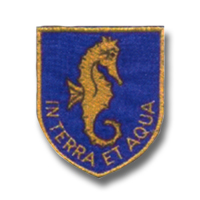 6961st CLG Patch
6961st CLG Patch |
||||||||||||||||||||||||||||||||||||||||||||||||||||||
| (Source: Email from Günter Oswald, 8594th LS Co; 8595th LS Pltn) | ||||||||||||||||||||||||||||||||||||||||||||||||||||||
|
The
history of the 6961st Civilian
Labor Group (Swing Brg Maint & Scty) is highlighted
by three major events:
At that time, one Battalion already existed: the 6960th Labor Service Amphibious Battalion, renamed in 1959 to 6960th Directorate (Swing Brg Maint & Scty) with CO LtCol Schmidt under 11th EngrGp. At the same time the 6961st Directorate (Swing Brg Maint & Scty) was activated under the 555th Engr Gp. Commanding Officer was LtCol Wilhelm A Sigmund (former CO of 8594th LS Float Brg Co). |
||||||||||||||||||||||||||||||||||||||||||||||||||||||
|
ORGANIZATION
(6961st CLG Bn, 1959):
|
||||||||||||||||||||||||||||||||||||||||||||||||||||||
|
||||||||||||||||||||||||||||||||||||||||||||||||||||||
|
While the 8594th continued its mission of Bridge training with
US Combat Engineers
using the Class 60 Float Bridge
along the Rhine and Danube Rivers, the 8540th and 8541st took over
four of the six Swing Bridges as follows:
The mission of the 8595th was to provide specialized technical support to the Swing Bridges. Each Bridge Site consisted of one Swing Bridge MLC 100, 2 heavy rafts MLC 100, 2 Powerboats 27ft, and a certain contingent of Amphibious Trucks. The platoon operating the site was housed in wooden barracks on piles complete with mess, orderly room, sanitation, motor pool and so on. The sites were not fenced in, however they were guarded by personnel stationed there. The same setup applies to the Bridge Sites at GERNSHEIM and NIERSTEIN which were operated by platoons of the 8542nd under the 6960th Directorate. There are however three major differences: While five Swing Bridges had Bailey superstructure, the bridge at GERMERSHEIM had a steelweb superstructure. While 5 of the bridge sites are located on the western (left) shore of the Rhine River, Bridge Site NIERSTEIN was located on the eastern (right) shore. And also at NIERSTEIN, instead of using the pivot piles, a telescope arm was used for technical reasons. Regularly, once a month, on a Sunday morning the river was closed to ship traffic by German Authorities (Wasserschiffahrts Direktion) and the bridges were closed - mostly operated by US Engineers and together with German personal. The procedure for river closing was: a unit asks higher headquarters that the river be closed between Rhine-Km 310.4 and 312.0 on a certain date and time. This request is forwarded thru the chain of command to the American Embassy in Bonn. They in turn ask the German Ministry of Traffic who than will give orders to the "Wasserschiffahrtsdirektion" in Mainz. Information pertaining to the closing is then given to radio stations, waterpolice and some civilian organisations who work with Rhine River shipping, one week prior to the event. Approximately 500 m upstream and downstream of the bridge site on the left and right banks traffic signs with red lights are installed informing ships to stop. In addition, water police are positioned with their boats upstream and downstream. Only after receiving their OK, can the bridge commander start with the bridge closure. This routine was strictly kept until 1965. Any bridge "deadlined" (inoperable) for more than 12 hours caused reports, hectic questions from higher headquarters, in short such events were unthinkable. Deadlining could be caused by fuel lines (of engines) being clogged, outboard engines of the "Mules" that would not start because of low batteries, wires that were broken and so on. Despite being build very ruggedly, incidents that occurred once or twice a year could cause serious damage to the half bridges moored along the banks of the river when captains of civilian ships ran into them due to fog, drunkeness or misorientation. In 1965 the 6960th and 6961st - without 8591, 8594 and 8592 - were deactivated and the bridges and rafts were turned over to the German Army including personnel to form one Engineer Bataillon, which was deactivated 1993. Though it was said that the worst crime within the army was to hand out pencil and paper to engineers, we are still proud of having done a good job, not only by supporting the US Army but also in helping defend the peace in Europe during the Cold War. |
||||||||||||||||||||||||||||||||||||||||||||||||||||||
| If you have more
information on the history or organization of the 6961st CLG, please
contact me |
||||||||||||||||||||||||||||||||||||||||||||||||||||||
| 8540th LS Amphibious Truck Company | ||||||||||||||||||||||||||||||||||||||||||||||||||||||
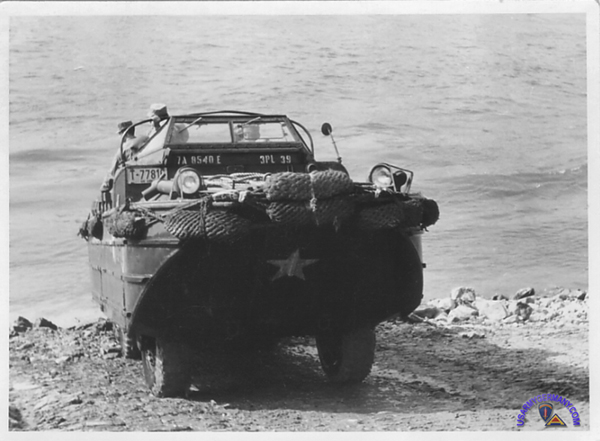 A DUKW from the 8540th LS Co negotiates the rocky embankment of the Rhine River as it exits the river during a bridging exercise. |
||||||||||||||||||||||||||||||||||||||||||||||||||||||
| 8542nd LS Amphibious Truck Company | ||||||||||||||||||||||||||||||||||||||||||||||||||||||
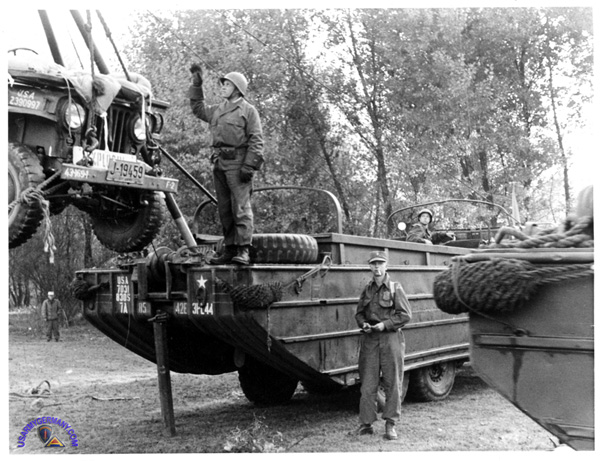 A member of the 8542nd LS Co lifts a 169th Inf Regt jeep with the help of an "A" frame and the DUKW's power winch in preparation to loading the vehicle into the DUKW's cargo space. |
||||||||||||||||||||||||||||||||||||||||||||||||||||||
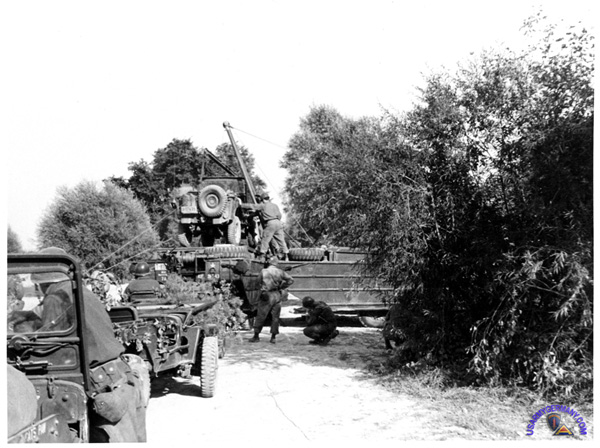 Operations continue as other jeeps line up for loading onto 8542nd DUKWs. |
||||||||||||||||||||||||||||||||||||||||||||||||||||||
|
||||||||||||||||||||||||||||||||||||||||||||||||||||||
| (Source: Email from Günter Oswald, 8594th LS Co; 8595th LS Pltn) | ||||||||||||||||||||||||||||||||||||||||||||||||||||||
|
||||||||||||||||||||||||||||||||||||||||||||||||||||||
| In the photo on the left, the Chief Engineer, 7th Army (leaning into the cabin) and several members of the Labor Service organization take a closer look at the LARC-V. BTW, 53 LARC-V's were delivered to the Bundeswehr "Amphibisches Transportbattailon 2" und "4" in Emden in the 1963/64 timeframe. |
||||||||||||||||||||||||||||||||||||||||||||||||||||||
| 8592nd Civilian Support Group (Maint GS/DS, Bridge Park) | ||||||||||||||||||||||||||||||||||||||||||||||||||||||
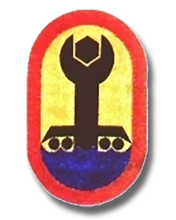 8592nd Civilian Support Group patch 8592nd Civilian Support Group patch |
||||||||||||||||||||||||||||||||||||||||||||||||||||||
| 8594th CLG | ||||||||||||||||||||||||||||||||||||||||||||||||||||||
| 1951 - 1991 | ||||||||||||||||||||||||||||||||||||||||||||||||||||||
| (Source: Email from Günter Oswald, 8594th LS Co; 8595th LS Pltn) | ||||||||||||||||||||||||||||||||||||||||||||||||||||||
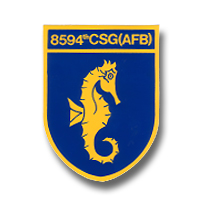 8594th
Civilian Support Group Patch 8594th
Civilian Support Group Patch |
||||||||||||||||||||||||||||||||||||||||||||||||||||||
| 8594th CLG HISTORY | ||||||||||||||||||||||||||||||||||||||||||||||||||||||
|
||||||||||||||||||||||||||||||||||||||||||||||||||||||
|
|
||||||||||||||||||||||||||||||||||||||||||||||||||||||
| Unit Citations | ||||||||||||||||||||||||||||||||||||||||||||||||||||||
| In 1959, best
unit within 7th (Army) Support Command at vehicle roadside spot inspection
In 1962, "Commendation for Merit" by Maj Gen William A Harris In 1975, winner of the Commanding General`s VII Corps Maintenance Excellence Award In 1987, winner of the Commanding General`s VII Corps Supply Excellence Award. In 1987, runner-up for the Commanding General`s VII Corps Maintenance Excellence Award In 1988, winner of the CINC USAREUR Sword of Freedom Award for unit maintenance excellence In 1988, winner of the Commanding General`s VII Corps Maintenance Excellence Award In 1989, runner-up for the Commanding General`s VII Corps Supply Excellence Award. In 1989, runner-up for the Commanding General`s VII Corps Maintenance Excellence Award In 1990, winner of the CINC USAREUR Sword of Freedom Award for unit maintenance excellence In 1990, winner of the Commanding General`s VII Corps Supply Excellence Award. In 1990, runner-up for the CINC USAREUR Sword of Freedom Award unit supply excellence In 1990, winner of the Commanding General`s VII Corps Maintenance Excellence Award Also, the unit was awarded the 7th Engineer Brigade Certificate of Achievement for Meritorious Service to the VII Corps and the Wartime Host Nation Support Program. Numerous letters of commendation from VII Corps, 3rd Infantry Division, 7th Engineer Brigade, and other commands. The 8594th CSG was the overall champion in the Pontonier Stakes in 1989 (see medal below) |
||||||||||||||||||||||||||||||||||||||||||||||||||||||
|
|
||||||||||||||||||||||||||||||||||||||||||||||||||||||
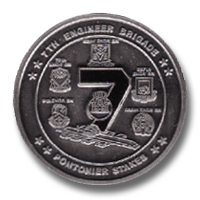 7th Engineer
Brigade "Pontonier Stakes" Coin
7th Engineer
Brigade "Pontonier Stakes" Coin |
||||||||||||||||||||||||||||||||||||||||||||||||||||||
|
|
||||||||||||||||||||||||||||||||||||||||||||||||||||||
|
||||||||||||||||||||||||||||||||||||||||||||||||||||||
|
|
||||||||||||||||||||||||||||||||||||||||||||||||||||||
| Related
Links: |
||||||||||||||||||||||||||||||||||||||||||||||||||||||
